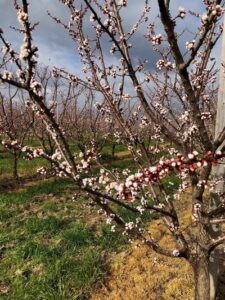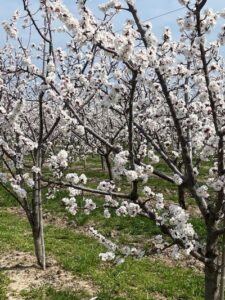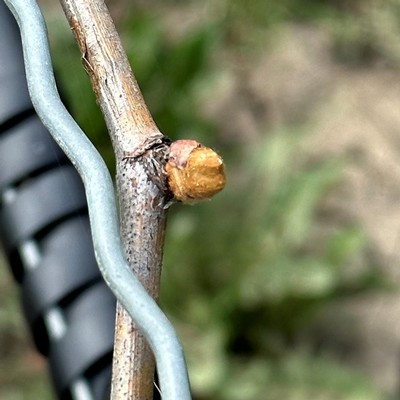Farmers are defined as those who always look a gift horse in the mouth – it is, appropriately, an old farming expression. This year, warm weather seems to be a couple of weeks earlier than normal. This can be a great thing in a cool area like Niagara but we are still worried about cool weather and frost in the weeks ahead.
I was looking through my photo library, and we had snow on the 9th of May in 2020, and, we all know we shouldn’t plant frost sensitive flowers until May 24. Once the grape leaves burst their buds, any frost can be devastating and the volume of harvest will be lowered. The 2022 harvest was 50% of normal, which I think misrepresents the vintage. The hybrid grape yields, which are mostly allocated to the 25% Canadian content that is required for those “Cellared in Canada” blends, were not nearly as affected as the Vinifera varieties like Cabernet Sauvignon and Chardonnay which were down by as much as 80%. Even if the vintage this year is good weather-wise, many vineyards are still in recovery mode and will only have a potential yield of around 75% this year, and in many cases the vineyards were pulled out which means NO income for at least 4 years!


Same Orchard – April 12, 2020 and April 15, 2023
It’s not just grape farmers that have to worry. Niagara’s orchards are starting to come into bloom – possibly the trickiest and most worrisome time to be a fruit farmer. While the blooms are beautiful, they are very susceptible to weather challenges.
Frost is obvious, but if the temperature is cool, the bees work more slowly. If it is rainy, the bees can’t work at all. No bees means no pollination. No pollination means no fruit. Fruit farmers usually rent beehives to ensure good pollination. The hives are trucked from one location to another, often spending around a week in each area. This extended early period of warm weather can bring all of the blossom on at once. Instead of an orderly progression over a month, the blossom period is compressed to two weeks, resulting in beehive scheduling chaos and, often, poor fruit set and reduced yield.
I hate to think of all of the decisions in front of many grape and fruit growers this year, among them things like, “can I afford continue?”, or, “do I want to continue?” There is huge upward pressure on land prices, I think at least partly due to the removal of land from the Green Belt reserve (thanks Doug 😑). Expensive land makes it less appealing to farm, never mind that all of the other expenses of farming are increasing, especially diesel, labour and chemical inputs.
I still don’t understand why there seemed to be no outreach to the government for aid in disaster relief from the killing frost of 2022. Billions were sent to growers in France, Italy and California to compensate for frost and drought. That aid made it easier for them to sell their products to the LCBO, while Ontario growers heard nothing from the GGO or OMAFRA.
This early season certainly makes us both excited and worried. A longer season would ensure full ripening of our Bordeaux red varieties which, in turn, would give us some amazing wines. If the cold weather stays away (notice I said cold: cool is OK), it will give us the chance to finish pruning and tying the vines. We have already mulched most of the pruned vines, and lightly worked alternate rows of vines, so that we can plant our wildflower seed mix into the vineyard. Wildflowers give us more biodiversity in the soil and is a wonderful food for the bees and other insects. Our SIP Club members received wildflower seed bombs as our gift in their March selection – the same kind of wildflowers we use here.
In the next couple of weeks, the dandelions will come into full bloom. This is one of my favourite times in the vineyard. Dandelions are one of the earliest wild pollination foods, and it is a pleasure to slow down and just watch the bees do their thing. Sometimes slowing down is the best thing in the world – especially with a glass of wine in hand.

